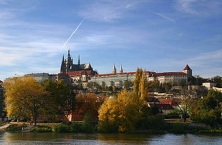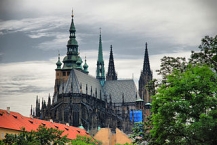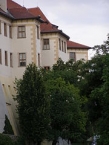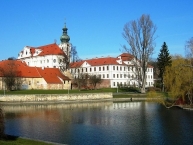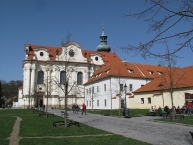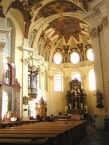Cycle Tour Euro 2000
Planned tour
Actions
![]()
Please wait - map data are loading
Added on 22 Feb 2021,
last edited by sankarson on 22 Feb 2021
Actions
Cycle route metrics
planned
ridden
Total distance in km
2.000
0
Cumulative elevation gain in m
0
0
Avg. slope uphill in %
-
-
Cumulative elevation loss in m
0
0
Information about rights to the gps-track data | |
|---|---|
Rights owner | |
Rights characteristic / license | cc0: Public Domain no Rights reserved |
Link to the description of the license | |
GPX file uploaded | by sankarson on 22 Feb 2021
|
Track points in total
18.762
0
Track points per km (avg)
9
0
Start/endpoint
Start location
Prague, Prague, CZ (203 m NHN)
End location
Tallinn, EE (24 m NHN)
Beds4Cyclists, worth visiting and infrastructure
Name and address
Latitude / Longitude
Phone
Fax
Mobile
Type of accommodation
Rating for cyclists
Route km
Dist. to route
Elevation
0 km
1,4 km
227 m
Prague/Castle and Lesser Town
CZ-118 00 Praha
Old town/World heritage site
Information about copyright | |
|---|---|
Rights owner | |
Rights characteristic / license | by-sa: CREATIVE COMMONS Attribution-ShareAlike |
Link to the description of the license | |
Image taken over from | |
Image has been uploaded | by biroto-Redaktion on 17 Jun 2012
|
Information about copyright | |
|---|---|
Rights owner | |
Rights characteristic / license | by: CREATIVE COMMONS Attribution |
Link to the description of the license | |
Image taken over from | commons.wikimedia.org/wiki/File:Northeastern_part_of_Saint_Vitus_Cathedral_Prague_pseudo-HDR.jpg |
Image has been uploaded | by biroto-Redaktion on 17 Jun 2012
|
Information about copyright | |
|---|---|
Rights owner | |
Rights characteristic / license | by-sa: CREATIVE COMMONS Attribution-ShareAlike |
Link to the description of the license | |
Image taken over from | commons.wikimedia.org/wiki/File:Pražský_hrad,_Lobkowiczký_palác_01.jpg |
Image has been uploaded | by biroto-Redaktion on 17 Jun 2012
|
Castle and Lesser Town are both in district Prague 1, Castle district of Prague ![]() (Czech: Hradčany.) is the highest part of the city while the Lesser Town of Prague (Czech: Malá Strana) is the lower area on the left bank.
(Czech: Hradčany.) is the highest part of the city while the Lesser Town of Prague (Czech: Malá Strana) is the lower area on the left bank.
Understand
Prague Castle is the symbol of the Czech state. It became the seat of Bohemian dukes in the 9th century. Since then, the Prague Castle had been continually the seat of ruler of the Czech lands, from kings of Bohemia to Czechoslovak and Czech presidents. According to the Guinness Book of Records, Prague Castle is the largest ancient castle in the world. Castle complex is a unique mixture of different architecural styles. From romanesque St. George's Basilica, gothic St. Vitus cathedral, renaissance Belvedere with gardens to adjustments by well-known architects form 20th century.
Under the Castle is Lesser Town. Founded in 13th century, this part of Prague was inhabited mostly by Germans. Lesser Town was destroyed during the Hussite Rebellion, therefore Baroque architecture predominants there.
See
The main attraction of Hradčany (Castle Quarter or Castle District) is the Prague Castle itself. However the Castle Quarter is much larger and is filled with many other attractions, palaces, churches and monasteries. Some of the palaces host excellent galleries, others are used as government or church buildings.
Some of the areas require you to buy a ticket for entrance. You can buy one of two combined tickets. The short tour allows entrance to the Old Royal Palace, St. George's Basilica, Golden Lane and Daliborka Tower for 250 Kč. The long tour allows entry to all the same places as the short tour, as well as "The Story of Prague Castle" exhibition, the National Gallery display in the Convent of St. George, and the Prague Castle Picture Gallery all for 350 Kč. The entry to the St. Vithus Cathedral is free (but crowds are regulated) when the owned by the state, but money is charged when owned by the Catholic church. The legal battle over the ownership of the cathedral still continues.
- ⊙Prague Castle (Pražský Hrad). The former seat of the King and is now the seat of the Czech president. This is Prague's number one tourist attraction so expect huge crowds and possibly long lines, especially during high tourist season. Your best bet is to come early, as soon as the castle opens.
Similar to other royal palaces, there is an hourly changing of the guard ceremony. At noon, the ceremony includes fanfare at a flag ceremony in the first courtyard. - ⊙St. Vitus Cathedral (Katedrala svateho Vita). In the center of the castle and the most important cathedral in all of the Czech republic. The oldest parts of the cathedral are from the 14th century, but the cathedral was not completed in the Medieval period. The highest tower was completed in Renaissance and Baroque styles much later, as is clearly obvious. The Western portal and both Western towers are even younger, completed in the 19th and early 20th centuries. However, the original Medieval plans were used for them and their relatively small age is not obvious. St. Vitus Cathedral was the place of royal coronations and also the location of the remains of several famous Czech Kings (notably Charles IV, of Charles Bridge fame).
- ⊙Old Royal Palace (Starý královský palác). The original seat of Czech rulers. Visitors first enter the Vladislav hall, the largest high-Gothic vaulted space in Central Europe. Other rooms include the Palace chapel and throne room. At the end of the exhibit is "The Story of Prague Castle" exhibit, which features artificats from the castle's past.
- ⊙St. George's Basilica. The second oldest church in the castle and features a colorful Baroque facade. The interior is visibly older and is the burial place of the Premyslid family and the first Czech saint, Princess Ludmila.
- St. George's Convent - National Gallery. One of several branches of the National Gallery is located inside this, the first convent in Bohemia. Today it houses the collection of Czech Mannerist and Baroque art.
- ⊙The Golden Lane (Zlatá ulička). During the reign of Rudolf II, goldsmiths lived in a lively alleyway filled with tiny workshops, which were also their residence, hence its name. Tiny, cobblestoned walkway filled with brightly-painted little houses, where modern man has a hard time standing with the low ceiling. Franz Kafka occupied No. 22 from 1916 to 1917, and this is why most people visit the Golden Lane. There really isn't another good reason unless you want to buy some overpriced souvenirs in the small shops now occupying the houses, or need to cut through the crowds to see the Daliborka.
- The Daliborka. Built by Prince Vladislav in 1496, the tower at the far end of the castle is part of a new fortified wall. Its first prisoner was a recalcitrant knight named Dalibor who, according to legend, played his violin very sadly at the wall serenading the castle residents. Though, the thickness of the walls makes that legend a little unlikely. No one would have been able to hear him outside! Today the tower holds a small display of prison and torture techniques used during that time.
- Prague Castle Picture Gallery. Housed in the original castle stables. It contains Renaissance and Baroque art, including parts of the original collection of Rudolph II.
- The Royal Garden. To the east/north-east of the palace is a large park. Aside from its own beauty, it has an excellent view of the east bank of the river. Entrance is free.
- The State Rooms at Prague Castle. Open to the public two days of the year, as they are mostly used exclusively by the President. Contact the Castle Information office for more details.
- ⊙Charles Bridge (Karlův Most). connects the Old Town with Lesser Town. Commissioned by Czech king and Holy Roman Emperor Charles IV and constructed between 1357 and 1402, it is one of the most interesting historical stone bridges in Europe. It is 516 meters long with 16 arches. Baroque statues (a total of 30) began to be placed here in the 17th century. The best time to visit the bridge is in the quiet morning or in the evening at sunset, when one can enjoy a view of the fully lit Prague Castle.
- ⊙Wallenstein Palace (Valdštejnský palác) is a Baroque palace, currently the home of the Czech Senate. The original Palace was built in years 1623-1630 by Albrecht von Wallenstein, Duke of Mecklenburg (1583-1634), who made his name and fortune as the Commander-in-Chief of the Imperial forces in the Thirty Years War.
- ⊙Child Jesus of Prague, Karmelitská 385/9 (Church of Our Lady Victorious of Discalced Carmelite Order). This image of Christ, known also as the Holy Infant of Prague, is among the most widespread religious images in the world. The statue was brought from Spain in the 16th century and given to the Carmelites in 1628. It is 47 cm high and represents Jesus as a Child and King. The statue is carved out of wood and the surface is modeled in coloured wax. The entrance to the church is free of charge.
- ⊙Petrin Hill. Due to a housing crunch, most young Czechs don't move out of their parents' house until they marry (sometimes long after!) This lack of privacy leads to some very public displays of affection - what you see on the metro or trams won't compare to what you’re likely to encounter on Petrin Hill. This hillside slopes down from the Castle and Strahov Monastery to Mala Strana and Malostranske namesti metro station. It affords an amazing view of the city on a clear day, and in springtime the trees are all in bloom. This is possibly the nicest place to kick back with a bottle of wine and your significant other to watch the sun set over the city. Petrin has a miniature Eiffel Tower that offers a nice view over Prague and its suburbs.
- ⊙Petřínská rozhledna. A smaller version of the Eiffel Tower on the top of Petrin Hill overlooking Prague. Climbing the tower costs 105 Kč for a standard ticket or 55 Kč for discounts. Paid lift available.
- ⊙Loreta. A beautiful Baroque convent in the Lesser Town.
- ⊙Franz Kafka Museum, Cihelná 2b, ☎ +420 257 535507. Influences, life and works of the German language writer.
- ⊙The Pedagogical Comenius Museum, Valdštejnská 20, Praha 1. A museum documenting the writings of the Czech Renaissance erudite.
- ⊙Lobkowicz Palace, Jiřská 3. 10:00-18:00. Art museum near Prague Castle. Houses the original manuscript for Beethoven's famous 5th symphony, and many other interesting artifacts. 275 crowns.
- Museum Kampa. A museum of modern Central European art.
Information about copyright | |
|---|---|
Rights characteristic / license | by-sa: CREATIVE COMMONS Attribution-ShareAlike |
Link to the description of the license | |
Input taken over from: |
Wikivoyage contributors, 'Prague/Castle and Lesser Town', Wikivoyage, The FREE worldwide travel guide that anyone can edit, 11 September 2016, 14:25 UTC, <https://en.wikivoyage.org/w/index.php?title=Prague/Castle_and_Lesser_Town&oldid=3048887> [accessed 13 October 2016] |
taken over / edited on | 13 Oct 2016
|
taken over / edited by |
|
0 km
1,6 km
219 m
0 km
4,4 km
322 m
Information about copyright | |
|---|---|
Rights owner | |
Rights characteristic / license | by-sa: CREATIVE COMMONS Attribution-ShareAlike |
Link to the description of the license | |
Image taken over from | commons.wikimedia.org/wiki/File:Praha_Břevnov_monastery_from_SE_DSCN0284.JPG |
Image has been uploaded | by biroto-Redaktion on 12 Oct 2013
|
Information about copyright | |
|---|---|
Rights owner | |
Rights characteristic / license | by-sa: CREATIVE COMMONS Attribution-ShareAlike |
Link to the description of the license | |
Image taken over from | commons.wikimedia.org/wiki/File:Praha_Břevnov_monastery_main_entry.JPG |
Image has been uploaded | by biroto-Redaktion on 12 Oct 2013
|
Information about copyright | |
|---|---|
Rights owner | |
Rights characteristic / license | by-sa: CREATIVE COMMONS Attribution-ShareAlike |
Link to the description of the license | |
Image taken over from | |
Image has been uploaded | by biroto-Redaktion on 12 Oct 2013
|
Information about copyright | |
|---|---|
Rights owner | |
Rights characteristic / license | by-sa: CREATIVE COMMONS Attribution-ShareAlike |
Link to the description of the license | |
Image taken over from | commons.wikimedia.org/wiki/File:Praha_Břevnov_St_Margaret_interior.JPG |
Image has been uploaded | by biroto-Redaktion on 12 Oct 2013
|
Das Stift Břevnov, auch Erzabtei Břevnov (tschechisch Břevnovský klášter, deutsch Stift Breunau), ist ein Kloster des Benediktinerordens in der Markétska ulice im Prager Stadtteil Břevnov. Es birgt die barocke Klosterkirche St. Margareta (tschechisch Bazilika svaté Markéty).
Das Stift Břevnov wurde 993 als erstes Benediktinermännerkloster auf böhmischem Gebiet vom hl. Adalbert, dem zweiten Bischof von Prag, mit Unterstützung Herzogs Boleslav II. dem Frommen bei dem im herzoglichen Besitz befindlichen Hof Břevnov gegründet.
Die erste dreischiffige romanische Krypta, deren Mauerwerk unter dem Chorraum der Klosterkirche erhalten ist, entstand im 11. Jahrhundert während der Regierungszeit von Abt Meginhard. Im 13. Jahrhundert wurde an deren Stelle eine gotische Kirche errichtet. Nachdem in den Hussitenkriegen Kloster und Kirche zerstört worden waren, flohen Abt und Konvent 1420 in das Kloster Braunau . Damit begann die Epoche des Doppelklosters Břevnov-Braunau. 1672 erwarb das Kloster die auf halben Wege zwischen Břevnov und Braunau
gelegene Herrschaft Sloupno.
Nach dem Dreißigjährigen Krieg wurden Klostergebäude und Klosterkirche unter Abt Thomas Sartorius († 1700) wieder aufgebaut. Die heutige, kunsthistorisch bedeutende Barockanlage entstand 1708–1740. Die Innenraumgestaltung der Basilika St. Margareta (bazilika sv. Markéty) leitete 1708–1715 dessen Sohn Kilian Ignaz Dientzenhofer. Karl Joseph Hiernle schuf die Statuen des hl. Benedikt und deshl. Nepomuk, die Fassadenplastiken schuf Mathias Wenzel Jäckel. Die Altargemälde stammen von Peter Johann Brandl, die Deckenmalerei von Johann Jakob Stevens von Steinfels.
Das Deckenfresko Das Wunder des hl. Günther im Prälatensaal (tschechisch Tereziánský sál) des Klosters schuf Cosmas Damian Asam. Die Stuckaturen stammen von seinem Bruder Egid Quirin Asam.
Auch im 20. Jahrhundert erlebte das Stift Břevnov und seine Mönche eine schwere Zeit. Das Klostergebäude wurde im Zweiten Weltkrieg von der Wehrmacht besetzt. Der Unterdrückung durch die kommunistische Regierung der Tschechoslowakei folgte 1950 die Enteignung.
Nach dem politischen Umbruch von 1989 wurden die verfallenen Klostergebäude den Benediktinern durch die Tschechoslowakei zurückgegeben. Mit Unterstützung ausländischer Benediktinergemeinschaften und der staatlichen Behörden konnte die Bausubstanz gerettet und nachfolgend die Klosterkirche und die Klostergebäude renoviert werden. 1993 wurde das 1000-jährige Jubiläum gefeiert. Papst Johannes Paul II. erhob Stift Břevnov aus diesem Anlass zurErzabtei und besuchte es 1997 im Rahmen einer Pastoralreise. Seit 1999 steht dem Kloster Prior-Administrator Prokop Siostrzonek vor.
Information about copyright | |
|---|---|
Rights characteristic / license | by-sa: CREATIVE COMMONS Attribution-ShareAlike |
Link to the description of the license | |
Input taken over from: |
Seite „Stift Břevnov“. In: Wikipedia, Die freie Enzyklopädie. Bearbeitungsstand: 9. September 2013, 20:34 UTC. URL: http://de.wikipedia.org/w/index.php?title=Stift_B%C5%99evnov&oldid=122388666 (Abgerufen: 12. Oktober 2013, 13:24 UTC) |
taken over / edited on | 12 Oct 2013
|
taken over / edited by |
|
0 km
0,2 km
202 m
0 km
0,3 km
201 m
![]()

